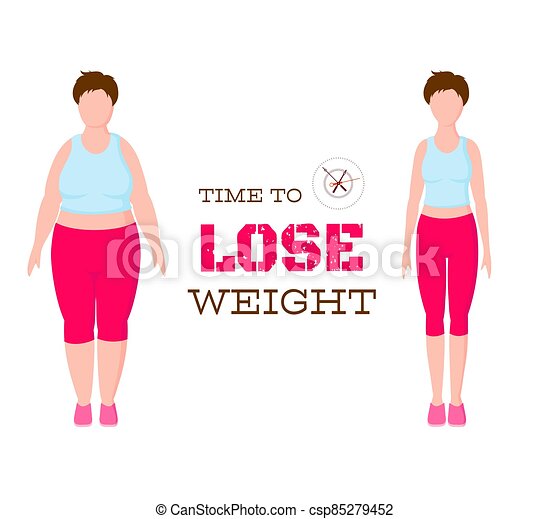
If you are looking for a low impact workout that burns 400-600 calories an hour, a spinning class might be the right choice. These classes can be substituted for strength training and are a great option to lose weight. There are many benefits to taking a spinning class. Continue reading to learn more. This article will help you book your next spin class.
Spin classes burn between 400 and 600 calories per hour
If you're looking to lose weight, taking a spin class could be the perfect solution. Spinning not only improves cardiovascular fitness, but it also burns fat and helps shed weight. While spinning is not the best workout, there are many other benefits. It can improve your body composition and reduce your body fat. You can also enjoy the camaraderie, great music, and the camaraderie.
Depending on the spin class, you could burn between 300 and 600 calories an hours. The more intense the class, you will burn more calories. This is especially important if you struggle to keep motivated for a 30-minute class. Start slow and increase intensity over the 30-minute class. It will depend on what type of spin class it is. Generally, you can expect to burn between 400 to 600 calories during a 45-minute class.

This is a low-impact, low-impact workout
A spin class is a great way for cardiovascular exercise without having to run. Because it is low-impact, spinning can be a great exercise for seniors and those with orthopedic injuries. You can adjust your resistance, so you can exercise at a comfortable pace without straining your joints. You may be amazed at the many benefits of spinning. Try spinning to see if you like it.
You will not only get a cardiovascular workout in spin class, but also better circulation. Spin classes improve mood, stamina as well as prevent chronic diseases. You will get your daily doses of exercise and you will burn between 500-600 calories. A spin class is easy to fit into your busy schedule. You can also take a spin class if you don't have the time to ride outside.
It is a great substitute for strength training
Many people don't realize that they can get a great workout without having to go to a gym. Strength training is a great way of building muscles and reducing the risk of injury. While it is not the only form of exercise that can increase your muscles, many people use strength training as a way to bulk up. It is a good idea not to go to a gym if you're not a regular exerciser.
Strength training is a tried-and-true recipe for building full-body muscle. The variety of forms available can make it difficult for newbies. Traditional strength training involves lifting heavy weights and is closely associated with bodybuilders. Functional strength training utilizes your own body weight as well as small pieces of equipment to enhance everyday movements. You can get a full body workout if you do it with multiple muscle groups.

It can help you lose weight
According to the American Sports Commission, indoor cycling can help you burn 600 calories in just 45 minutes. Although this is more intense than walking and aerobic exercise, it's important to be aware of your body before you begin an exercise program. The government has set a minimum of 150 minutes per week as a physical activity goal for adults. In other words, you can lose up to 1 lb per month by taking a spin class for 30 minutes.
Spinning has another benefit: the cardio component of the exercise can strengthen your heart. It is a great way to lose weight and inches. To make your workouts more enjoyable, consider hiring a personal coach to improve your form. These trainers can give you recommendations on which exercises are best for your body type and fitness level. You'll be able see your results quicker than you imagined and your results will be there sooner than anticipated.
FAQ
Is there any difference between intermittent fasting and calorie restriction?
Calorie restriction can be defined as eating less than your body needs. Intermittent fasting differs from other types of intermittent fasting in that it does not restrict calories. Instead, the emphasis is on eating fewer calories each day.
Intermittent Fasting is more efficient because you can enjoy the foods you love without feeling guilty.
Both methods have their merits and weaknesses. It is up to you to decide which method you prefer.
Would cardio exercises make me lose weight fast?
Cardio exercises are great at burning calories but don't help you lose weight. It all depends upon how much fat you have stored, and what type or exercise you do.
If you're obese, cardio exercises might not be enough for you to shed those extra pounds.
You should combine them with dieting or other types exercise.
If you are looking to lose weight quickly, cardio exercises such as running and jogging can be helpful. These exercises burn calories more than any other type.
However, resistance training is required if you wish to build muscles and not lose weight. Resistance training requires the use of free weights and machines as well as elastic bands.
For fast weight loss, combine cardio with resistance training.
Combining cardio and resistance training is a great way to quickly lose weight.
What Weight Loss Can You Expect In One Week?
Your current bodyfat percentage determines the amount of weight you will be able to lose. It is important to first calculate how much weight you wish to lose. Then, determine your BMI. Your BMI tells us how much weight you should lose in order to achieve this goal. If your BMI is 25 or greater, you're overweight. If your BMI exceeds 30, you may be obese.
For example, if 200 pounds is your BMI, it would be 28.7. To reach a healthy weight, you would need to lose 70 pounds. To see if you're overweight, visit www.healthyminds.com/bmi/.
Once you know your BMI, you can use this formula to figure out how many pounds you'll lose per week:
(Your Goal Weight - Current Weight)/BMI * 7 Number Of Pounds Lost Per Week
If you want to lose 50 pounds in one month, you'd need 2 weeks' worth of exercise, which equals 56 days, divided by 7 pounds lost per day. This equates to an average of 8.3lbs per week.
You could also try this calculator from www.weightlosscalculator.net. It will give you an approximate estimate of the calories you need to lose 1 pound each week.
What should I eat during intermittent fasting to lose weight?
Cut out carbs to lose weight. That means cutting out bread, pasta, rice, potatoes, and other carbohydrate-based food.
You'll also want to avoid eating too much protein because it keeps you full longer. So you won’t feel hungry nearly as often.
Instead, focus on foods that contain healthy fats, such as olive oil, avocado, nuts, and seeds. These foods help keep you satisfied for hours after eating them.
It is important to drink enough water. Water can help you lose fat by keeping you hydrated.
These foods may be what you crave when you eat fast. This doesn't mean that you must give in to your cravings. You might gain more weight if you do.
Try to limit how many calories you eat each day. This will help prevent you from overeating. If you feel hungry, drink water and not reach for another snack.
This might sound counterintuitive, but it's actually been proven to help you slim down. In a study published by Obesity, it was found that people consumed less calories if they drank plain water instead of sugary drinks.
Additionally, plain water can help reduce hunger pangs. Drinking water is the best way to lose weight if you don't want sweetened beverages.
To lose weight, you don’t have to count calories or restrict certain foods. Instead, focus on making small changes to your lifestyle.
For example, you can start by swapping your usual breakfast sandwich for a bowl of oatmeal. Try swapping your afternoon cookie to a piece or fruit.
These simple swaps will add up over time and help you shed pounds without spending hours in the kitchen.
How long does a weight loss process take?
Weight loss takes time. It takes about six months to lose 10% of your weight.
It's important to remember that you shouldn't expect to lose weight overnight. Your body takes time to adapt to new diets.
This means that you need to slowly change your diet over a period of time, such as a few days or weeks.
You should also stop trying fad diets. They don't work. Instead, you should change your daily routine.
Consider, for instance, that you often eat unhealthy snacks late at the night. You need to reduce this behavior.
It is better to eat healthier meals early in the evening. This will prevent you from snacking late at night.
Water is essential for your body. Water keeps your body hydrated and prevents dehydration. Dehydration causes you to feel fatigued and slow.
A lot of water throughout the day is a great way to stay energized.
It is important to reduce stress levels through activities that allow you to relax. Spending quality time with loved ones is one way to reduce stress levels.
You can also listen to music or read books.
These activities will help to relax and unwind from stressful situations. They will also improve your mood, self-esteem, and overall well-being.
When you are trying to lose weight, it is important to consider your health first.
Your physical health is a sign of your overall health. Regular exercise and proper nutrition are key to getting fit.
How can busy people lose excess weight?
You can lose weight by eating less and moving more.
You'll gain weight if you eat too many calories. You'll gain weight if you don't exercise enough. These two simple habits can help you start losing weight.
Why exercise is important to weight loss
The human body is an incredible machine. It was built to move. It's designed to move.
Exercise is good for your health and helps you tone your muscles. This can make you feel more positive both physically and mentally. You may have heard people say "exercise is important for weight loss." But why exactly does exercise help lose weight?
-
Exercise boosts metabolism. Being active can increase your body's ability to use energy. Every time you move, your heart beats faster, blood flows to your muscles, and your lungs absorb oxygen. All of these activities consume energy. You can burn calories more easily by exercising and increasing your metabolic rate. The amount of energy that your body burns during exercise is called the "burning calories".
-
Exercise reduces appetite. Exercise can help you lose weight.
-
Exercise builds strength. Muscle tissue takes more energy to work than fat tissue. If you build muscle mass, you will require less food to maintain your weight.
-
Exercise releases endorphins. Endorphins make you smile. They are released into the bloodstream during exercise. Endorphins are known to block pain signals from your brain. This results in a feeling of wellbeing.
-
Exercise can boost self-esteem. Exercise regularly leads to higher self-esteem. It also leads to a healthier lifestyle.
Start small to lose weight. You can add one of these tips into your daily life today.
Statistics
- It's estimated that half of all American adults attempt to lose weight every year (1Trusted (healthline.com)
- Another study found that 24 weeks of weight training led to a 9% increase in metabolic rate among men, which equated to burning approximately 140 more calories per day. (healthline.com)
- Among women, the increase in metabolic rate was nearly 4%, or 50 more calories per day (14Trusted Source (healthline.com)
- A 12-week study in 20 women with obesity found that walking for 50–70 minutes 3 times per week reduced body fat and waist circumference by an average of 1.5% and 1.1 inches (2.8 cm), respectively (healthline.com)
External Links
How To
How to Intermittent Fasting
Intermittent Fasting is a method of dieting where you only eat one meal per week, typically Monday through Friday. The goal is to decrease your overall calories and still get adequate nutrition. It's believed that this helps burn fat faster than if you were eating normal meals throughout the entire week.
The most common form of IF involves restricting calories only on certain days of the week. This means you could skip breakfast every morning and still eat what you want the rest of the week. You can also opt to eat three small meals a day instead of two large.
There are many different forms of intermittent fasting, including alternate day fasting, 5/2 fasts, 8/4 fasts, 16/8 fasts, etc. Each type of intermittent fasting has its pros and cons. Alternate day fasting, which doesn't require you to change your lifestyle, is the best way to get started. But, there are some people who find it hard to follow such a strict schedule. These people might prefer to try different methods.
If you are interested in starting an intermittent fasting regime, I recommend beginning with alternate-dayfasting. This will allow you to gradually transition into more extreme fasting routines without completely changing your lifestyle.